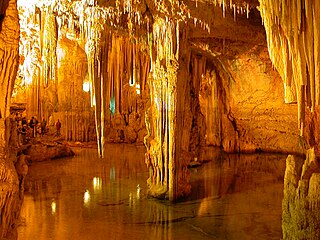
George Orson Welles was an American director, actor, screenwriter, and producer who is remembered for his innovative work in radio, theatre and film. He is considered to be among the greatest and most influential filmmakers of all time.

The Godfather Part III is a 1990 American crime film produced and directed by Francis Ford Coppola from the screenplay co-written with Mario Puzo. The film stars Al Pacino, Diane Keaton, Talia Shire, Andy García, Eli Wallach, Joe Mantegna, Bridget Fonda, George Hamilton, and Sofia Coppola. It is the third and final installment in The Godfather trilogy. A sequel to The Godfather (1972) and The Godfather Part II (1974), it concludes the fictional story of Michael Corleone, the patriarch of the Corleone family who attempts to legitimize his criminal empire. The film also includes fictionalized accounts of two real-life events: the 1978 death of Pope John Paul I and the Papal banking scandal of 1981–1982, both linked to Michael Corleone's business affairs.
A slasher film is a genre of horror films involving a killer stalking and murdering a group of people, usually by use of bladed tools. Although the term "slasher" may occasionally be used informally as a generic term for any horror film involving murder, film analysts cite an established set of characteristics which set slasher films apart from other horror subgenres, such as splatter films and psychological horror films.
The following is an overview of events in 1986 in film, including the highest-grossing films, award ceremonies and festivals, a list of films released and notable deaths.
The following is an overview of events in 1981 in film, including the highest-grossing films, award ceremonies and festivals, a list of films released and notable deaths.
The year 1973 in film involved some significant events.
The year 1970 in film involved some significant events.
The following is an overview of 1956 in film, including significant events, a list of films released and notable births and deaths.
The year 1949 in film involved some significant events.
The year 1941 in film involved some significant events, in particular the release of a film consistently rated as one of the greatest of all time, Citizen Kane.

Giallo is the Italian term designating mystery fiction and thrillers. The word giallo is Italian for yellow. The term derives from a series of cheap paperback mystery and crime thriller novels with yellow covers that were popular in Italy.
Sergio Martino is an Italian film director and producer, notable for his contributions to the giallo genre.

Faith Marie Domergue was an American film and television actress. Discovered at age sixteen by media and aircraft mogul Howard Hughes, she was signed to a contract with Hughes' RKO Radio Pictures and cast as the lead in the studio's thriller Vendetta, which had a troubled four-year production before finally being released in 1950.

The Spy Who Loved Me is a 1977 British spy film, the tenth in the James Bond series produced by Eon Productions. It is the third to star Roger Moore as the fictional secret agent James Bond. The film co-stars Barbara Bach and Curt Jürgens and was directed by Lewis Gilbert. The screenplay was by Christopher Wood and Richard Maibaum, with an uncredited rewrite by Tom Mankiewicz.

Valley of the Dolls is a 1967 American drama film starring Barbara Parkins, Patty Duke, Sharon Tate, Susan Hayward, Paul Burke, and Lee Grant. It was directed by Mark Robson, produced by Robson and David Weisbart. Based on Jacqueline Susann's 1966 novel Valley of the Dolls, it follows three women struggling to forge careers in the entertainment industry, each of them descending into barbiturate addiction—"dolls" being a slang term for depressant pills or "downers".

Neptune's Grotto is a stalactite cave near the town of Alghero on the island of Sardinia, Italy. The cave was discovered by local fishermen in the 18th century and has since developed into a popular tourist attraction. The grotto gets its name from the Roman god of the sea, Neptune.
The Academy of Canadian Cinema & Television's 13th Gemini Awards were held on October 4, 1998, to honour achievements in Canadian television.. The awards show, which was hosted by Ronnie Edwards and Kenny Robinson, took place at the Metro Toronto Convention Centre and was broadcast on CBC Television.

Claudio Cassinelli was an Italian film, stage and television actor.
Haruhiko Yamanouchi, also known as Hal Yamanouchi, is a Japanese-born actor, dancer, choreographer and writer. He has resided in Italy since 1975 and holds Italian citizenship.









